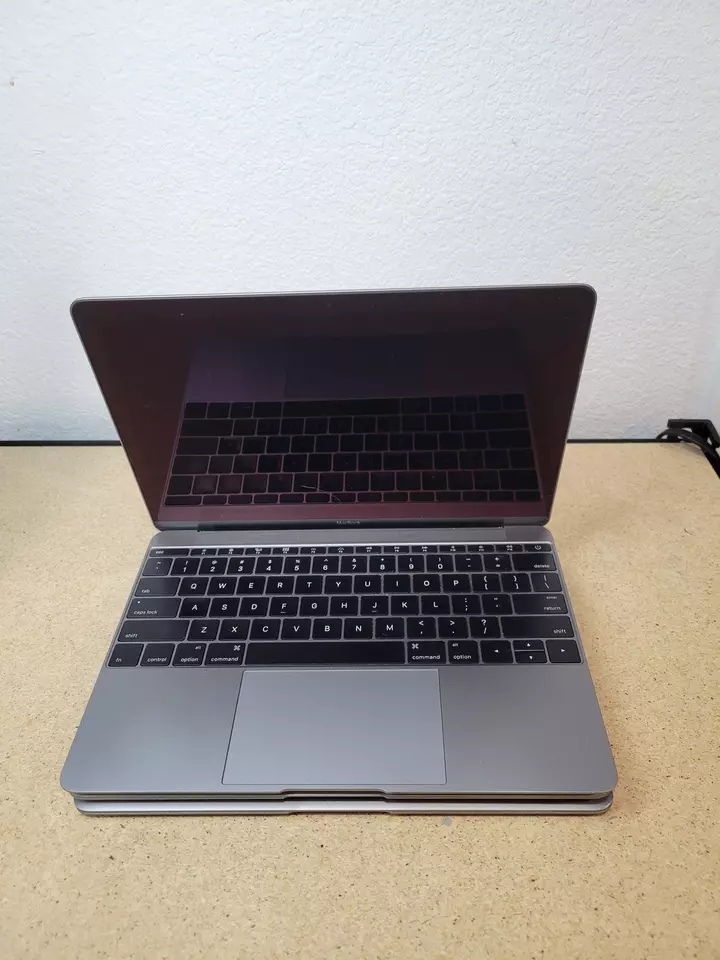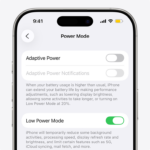Is your MacBook just sitting there, refusing to wake up? Few things are more frustrating than a MacBook that won’t turn on. You press the power button and nothing happens – no familiar startup chime, no Apple logo, just a blank screen staring back at you. The good news is that most MacBook startup issues can be fixed at home with some simple troubleshooting steps before you need to visit an Apple Store.
When your MacBook doesn’t power on, it could be due to several issues – from a dead battery to a faulty power adapter, or even more complex hardware or software problems. In many cases, fixing the problem is as simple as checking power connections or performing a forced restart by holding down the power button for about 10 seconds. For MacBook Pro and MacBook Air users, resetting the SMC (System Management Controller) often resolves power-related issues.
MacBook Won’t Turn On
If your MacBook doesn’t respond when you press the power button, don’t panic. Most startup issues are caused by simple things like power, peripherals, or software glitches. Follow these steps in order.
1. Check the Power Connection
- Inspect the charger and cable: Make sure your power adapter and cable aren’t damaged.
- Try a different outlet or charger: If possible, borrow a compatible power adapter to rule out a faulty one.
- Check the charging indicator:
- On MagSafe chargers, look for an amber or green light.
- On USB‑C models, try another port.
ℹ️ If your Mac has no built-in display (like a Mac mini or Mac Studio), ensure your external display is plugged in and turned on (source: Apple Support).
2. Perform a Power Cycle
If your Mac seems completely unresponsive:
- Unplug the power cable.
- Hold the Power button for 10 seconds.
- Reconnect the power cable and press Power again.
This can clear temporary power management glitches.
3. Check for Signs of Power
- Listen for startup sounds or fan noise.
- Look for a backlit keyboard or display flicker.
- If you see nothing, try adjusting display brightness or connecting an external monitor.
4. Reset the SMC (System Management Controller)
The SMC controls power functions and charging.
For Apple Silicon Macs (M1, M2, M3):
- Simply shut down, wait 10 seconds, then power on again — the SMC resets automatically.
For Intel Macs:
- Shut down your Mac.
- Hold Shift + Control + Option + Power for 10 seconds.
- Release all keys, then press Power again.
(Source: Macworld)
5. Reset NVRAM/PRAM (Intel Macs Only)
- Turn on your Mac and immediately hold Option + Command + P + R for 20 seconds.
- Release the keys and let the Mac restart.
This resets display, sound, and startup settings that might block booting.
6. Boot into Safe Mode
Safe Mode can isolate software issues.
- Apple Silicon: Hold the Power button until “Loading startup options” appears → select your disk → hold Shift → click Continue in Safe Mode.
- Intel: Turn on and hold Shift until the login window appears.
If the Mac boots in Safe Mode, a third-party app or login item may be causing the issue.
7. Try macOS Recovery
If your Mac powers on but won’t load macOS:
- Apple Silicon: Hold the Power button until “Options” appears → click Options → Continue.
- Intel: Turn on and hold Command + R until you see the Apple logo.
- From Recovery, use Disk Utility to repair your startup disk or reinstall macOS.
(Source: iFixit)
8. Disconnect All Accessories
Sometimes a faulty USB device or hub prevents startup.
- Unplug everything except the power cable.
- Try turning on your Mac again.
9. Check for Physical or Liquid Damage
If your MacBook recently got wet or dropped, internal damage might be the cause.
In that case, don’t keep trying to power it on — take it to an Apple Store or authorized repair center immediately.
10. Contact Apple Support
If none of these steps work, your Mac may have a hardware issue (battery, logic board, or display).
You can schedule a repair or chat with Apple directly here:
👉 Apple Support: If your Mac doesn’t turn on
Tip: Regular backups with Time Machine or iCloud can help you recover data easily if your Mac ever fails to start again.
Key Takeaways
- Check your power adapter, connections, and try a hard reset by holding the power button for 10 seconds.
- Reset the SMC by pressing Shift+Control+Option and the power button at the same time on MacBook models.
- Disconnect all external devices before troubleshooting and back up your data regularly to protect against future issues.
Initial Troubleshooting Steps
When your MacBook won’t turn on, there are several quick fixes you can try before seeking professional help. These simple steps often solve the problem and get your Mac working again without any technical knowledge.
Check Power Connection
First, make sure your MacBook has power. Check that the power adapter is firmly plugged into both the wall outlet and your MacBook. Look for a light on the connector – it should glow when properly connected.
Try using a different wall outlet to rule out electrical problems. If possible, test with another power cable or adapter to determine if yours is faulty.
Give your MacBook time to charge, especially if the battery was completely drained. Wait at least 30 minutes before trying to turn it on again.
Check the charging port for dust or debris that might block the connection. Gently clean it with compressed air if needed.
Perform a Power Cycle
A power cycle can reset your MacBook’s hardware and often fixes startup problems. To do this:
- Disconnect all external devices (USB drives, printers, external monitors)
- Hold down the power button for 10 seconds
- Release the button and wait 30 seconds
- Press the power button again to restart
For newer MacBooks with Touch ID, press and hold the Touch ID button instead of a power button. Look for any signs of life like screen flicker, startup sounds, or fan noise.
If your MacBook still won’t turn on, try connecting it to an external display to check if it’s just a screen issue.
Reset PRAM and SMC
The Parameter Random Access Memory (PRAM) and System Management Controller (SMC) control basic Mac functions. Resetting them often fixes startup issues.
To reset PRAM on Intel Macs:
- Shut down your Mac
- Turn it on and immediately press Command+Option+P+R
- Hold these keys for about 20 seconds
- Release when you hear the startup sound twice
For SMC reset on MacBook Pro or Air:
- Shut down your Mac
- Press Shift+Control+Option and the power button simultaneously
- Hold for 10 seconds
- Release all keys and press the power button
On newer M1/M2 Macs, simply shut down, wait 30 seconds, then restart to reset both systems automatically.
Diagnosing Hardware Issues
When your MacBook won’t turn on, the problem often lies with the hardware. Finding the exact issue requires a systematic approach to check each component that might be causing the failure.
Identify Peripheral Problems
Start by disconnecting all external devices from your MacBook. External hard drives, USB devices, and even display adapters can sometimes cause startup problems. Remove everything connected to your ports and try turning on your Mac again.
If your Mac boots after removing peripherals, reconnect them one by one to find the culprit. Sometimes a simple reset can help. Try these steps:
- Unplug all cables except the power cord
- Wait 30 seconds
- Hold the power button for 10 seconds
- Release and try turning on again
Faulty USB-C ports might prevent charging. Try different ports if your MacBook has multiple charging options. Check your charger too – sometimes the cable frays internally even when it looks fine on the outside.
Use Apple Diagnostics
Apple provides a built-in tool called Apple Diagnostics to test your Mac’s hardware. To use it:
- Shut down your Mac completely
- Press the power button, then immediately press and hold the D key
- Release when you see the language selection screen
For newer Macs with Apple silicon, restart while holding the power button until you see startup options, then press Command+D.
If standard diagnostics don’t start, try online diagnostics by holding Option+D instead. This pulls the diagnostic tools from Apple’s servers.
The test takes 2-5 minutes and shows any problems with error codes. Write down any codes for support calls. Common codes include NDL001 (memory) and NNN001 (logic board issues).
Check for Faulty Hardware Components
Several key components can prevent your MacBook from turning on. The battery is often the first suspect. Check if your Mac responds when plugged in but not on battery power.
For MacBooks that won’t power up at all, try an SMC reset:
- For T2 or Apple silicon Macs: Shut down, press and hold the power button for 10 seconds
- For older Macs: Shut down, press Shift+Control+Option on the left side with the power button for 10 seconds
Memory problems often show as random shutdowns or failure to boot. Logic board issues are harder to diagnose but often cause complete failure to power on. Display problems might make you think your Mac isn’t turning on when it’s actually running but not showing anything on screen.
If your Mac makes startup sounds but shows no display, try connecting to an external monitor to check if it’s just a screen issue.
Addressing Software Complications
Software issues often cause MacBooks to appear dead or unresponsive. These problems can happen after updates or when certain system files become corrupted. The good news is that many software-related startup issues can be fixed without taking your laptop to a repair shop.
Boot into Safe Mode
Safe Mode helps identify if third-party software is causing your MacBook startup problems. This special startup environment loads only essential software needed for basic operations.
To enter Safe Mode on an Intel MacBook:
- Turn off your MacBook completely
- Press the power button
- Immediately press and hold the Shift key
- Release the Shift key when you see the login window
For M1/M2 MacBooks:
- Shut down your MacBook
- Press and hold the power button
- Release when you see startup options
- Select your startup disk
- Hold Shift while clicking “Continue in Safe Mode”
If your MacBook works in Safe Mode, the problem is likely a third-party app or login item. Try removing recently installed apps or reset the SMC if needed.
Boot into Recovery Mode and Use Disk Utility
Recovery Mode gives you access to repair tools when macOS won’t start normally. Disk Utility in Recovery Mode can fix common disk errors that prevent startup.
- Intel Macs: Restart and immediately hold Command+R
- M1/M2 Macs: Press and hold the power button until startup options appear
Once in Recovery Mode, select Disk Utility from the utilities window. Here you can:
- Run First Aid on your startup disk
- Check for and repair disk errors
- Verify permissions (on older macOS versions)
Many MacBook startup issues can be fixed by running First Aid. If Disk Utility finds and fixes errors, try restarting normally afterward.
Reinstall macOS
When disk repairs don’t work, reinstalling macOS can fix corrupted system files without erasing your data. This is especially helpful after failed updates like Monterey installations that sometimes cause startup failures.
To reinstall macOS:
- Boot into Recovery Mode (Command+R during startup)
- Select “Reinstall macOS” from the utilities menu
- Follow the onscreen instructions
- Choose your startup disk when prompted
This process keeps your personal files intact while replacing only system files. Make sure your MacBook stays connected to power and Wi-Fi during installation.
The reinstallation can take 30-60 minutes depending on your internet speed. Don’t interrupt the process even if it seems stuck at times.
Resolve Black Screen of Death
The infamous black screen of death happens when your MacBook powers on (fans spin, keyboard lights up) but the display stays black. This can happen from display issues or deeper software problems.
Try these fixes:
- Reset the NVRAM/PRAM: Restart while holding Option+Command+P+R for 20 seconds
- Adjust brightness: Press F2 repeatedly (the screen might be at minimum brightness)
- Check power connections and try a different charging cable
- Connect to an external display to see if it’s just the built-in screen
If you hear startup chimes or fan noise but see nothing, try the keyboard shortcut Command+Option+P+R. This resets parameters that control display settings.
For persistent black screens, try booting while pressing the power button for 10 seconds, releasing, then immediately pressing Command+R for Recovery Mode.
Data Protection Procedures
When your MacBook won’t turn on, protecting your data becomes a critical concern. Taking immediate steps to safeguard your information can prevent permanent loss and increase recovery chances.
Prevent Data Loss Until Issue Is Resolved
If your MacBook won’t power on, don’t panic or try random fixes that might worsen the problem. First, check if the power issue is simple—try a different charger and outlet. Make sure the charging cable isn’t damaged.
For unbootable Macs, avoid force restarting multiple times as this can corrupt data. Instead, try booting in Safe Mode by holding the Shift key during startup.
If your Mac makes unusual noises or gets hot, shut it down immediately to prevent hardware damage that could make data recovery harder.
Keep the device in a cool, dry place until you can get professional help. Heat and moisture can damage storage components.
Backup Data to an External Hard Drive
If your MacBook starts intermittently, focus on backing up critical files immediately. Connect an external hard drive with enough space for your important data.
Quick backup options:
- Time Machine backup (if configured)
- Manual file copying of essential documents
- Cloud backup completion if possible
For Macs that boot occasionally, use Target Disk Mode to transfer data. Connect your Mac to another computer with a Thunderbolt or USB cable and hold T during startup.
Consider using Advanced Data Protection for iCloud to secure your backups. This encrypts more of your data and helps protect it even when your device is unavailable.
Check that backups complete fully before attempting any major repairs. Partial backups might miss critical files.
Utilize Data Recovery Software
When standard backups aren’t possible, data recovery software can help retrieve files from an unbootable Mac. These tools can extract data even when the operating system won’t start.
Recommended recovery options:
- Wondershare Recoverit: Recovers over 1000 file types
- EaseUS Data Recovery Wizard: User-friendly for beginners
- Disk Drill: Effective for recovering deleted files
To use recovery software, you’ll need to create a bootable USB drive from another computer. Boot your Mac from this drive to run the recovery program.
If you’re experiencing server errors with Apple’s data protection features, try again later or contact Apple Support before making further attempts.
For severe cases where the disk is physically damaged, professional data recovery services offer higher success rates but cost more. Don’t attempt to open drive components yourself as this can cause permanent data loss.
Seeking Professional Help
Sometimes MacBook issues go beyond basic troubleshooting. When your own efforts don’t work, expert assistance becomes necessary to diagnose and fix complex power problems.
Visiting an Apple Store or Authorized Service Provider
If your MacBook won’t turn on after trying the basic fixes, it’s time to get professional help. Apple Stores offer specialized support with trained technicians who can properly diagnose your device.
Before visiting, make an appointment through the Apple website to avoid long wait times. Bring your MacBook, charger, and any accessories you use regularly.
Apple technicians can run diagnostic tests that aren’t available to regular users. They can check for hardware problems like logic board failures or display issues.
If you don’t live near an Apple Store, look for an Apple Authorized Service Provider instead. These certified repair shops use genuine Apple parts and follow Apple’s repair procedures.
Remember that repairs might cost money if your warranty has expired. Ask for a cost estimate before approving any repairs. Apple’s technicians can often recover your data even when the computer won’t start.
Frequently Asked Questions
MacBook startup problems can be frustrating but often have simple solutions. Here are answers to common questions about MacBooks that won’t turn on.
What steps can I take if my MacBook does not turn on or charge?
First, check your power connections. Make sure your power cable isn’t damaged and is securely plugged into both your Mac and a working electrical outlet.
Let your MacBook charge for at least 30 minutes. Sometimes batteries drain completely and need time to gain enough power to start up again.
Try a different charger or power outlet if available. This helps determine if the problem is with your charging equipment rather than the MacBook itself.
What should I do when my MacBook shows a black screen and won’t turn on?
Press and hold the power button for 10 seconds, then release. This forces your Mac to restart if it’s frozen.
Check the screen brightness. Sometimes the screen is on but set to minimum brightness. Press the brightness up key several times.
Connect your MacBook to an external display if possible. This helps determine if the issue is with your screen rather than the computer itself.
How can I force a Mac to start up when it is unresponsive?
Reset the SMC (System Management Controller). For recent MacBooks, shut down your computer, then press and hold Shift+Control+Option on the left side of the keyboard along with the power button for 10 seconds.
Perform a PRAM/NVRAM reset by restarting your Mac and immediately pressing and holding Option+Command+P+R for about 20 seconds.
Boot in Safe Mode by starting your Mac and immediately pressing and holding the Shift key until you see the login screen.
What are common troubleshooting methods for a MacBook Air that won’t turn on?
Try a power cycle by unplugging all accessories, shutting down the MacBook, and removing the battery if possible (on older models).
Use a different charger to rule out charging equipment problems. Borrow one from a friend or try yours on another device.
Check for physical damage or signs of liquid damage. Look for discoloration around ports or on the keyboard.
Why might my MacBook not turn on even though it is connected to power?
Your battery might be completely drained and needs time to charge. Give it at least 30 minutes connected to power before trying again.
The charger or charging port could be damaged. Look for bent pins, debris in the port, or frayed cables.
Your power adapter might not provide enough wattage. Make sure you’re using the correct adapter for your specific MacBook model.
How can I perform a forced restart on an unresponsive MacBook?
Press and hold the power button for 10 seconds until your MacBook turns off completely, then press it again to restart.
For newer MacBooks with Touch ID, press and hold the Touch ID button until the device powers off, then press again to turn it on.
If the above doesn’t work, try the key combination of Control+Option+Shift+Power button and hold for 10 seconds, then release and press the power button again.







